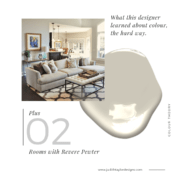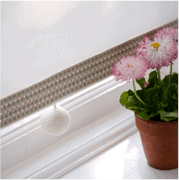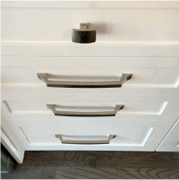A good paint colour match will do wonders to elevate your room. A weak colour or a mis-match will do just the opposite. Learning how to pick a paint colour can save you from making costly mistakes. Take it from someone who has learned the hard way!
I always tell people it doesn’t cost that much to transform your home with a fresh coat of paint…unless you get the colour wrong and have to paint it all over again. Full disclosure here, I did just that! You can read about the time I made a disastrous mistake here. Fortunately, for you, I have learned a lot since then. Most importantly, there are easy steps that will simplify everything.
How to pick a paint color and get it right the first time!
Step 1. Narrow down your options
Take a look at photos of rooms to get a sense of what you like, and what look you are going for. Light and airy? Dark and moody? Vibrant? Everyone’s colour preferences are different. If you haven’t taken our style quiz yet I would recommend you do that first. It will help you clarify your style. Colour sensibilities vary and knowing the desired style outcome will help you to decide. For example, if you are painting a room blue, a “fresh new traditional” room (one of our style archetypes from the quiz) might be best achieved with a muted or greyed blue. If you are a modernist, a saturated moody blue or smoky teal might be just right.
You can take the quiz here:
Step 2. Read the undertones
Now that may sound easy but it takes practice to develop this skill, but armed with this knowledge, you can avoid some glaring clashes.
First off, take a look at this paint swatch. What colour is it to you?

You probably said grey, and you wouldn’t be wrong. Here it is below, on the main wall set against while millwork.

Grey has been a popular colour in home decor and although waning in interest, it still provides a good lesson in reading undertones that can be applied to many neutral colours.
Let’s try another… what colour would you say this is?

Also grey. Let’s have a look at it in a room.

and another…

Here it is in a dining room. Still grey!

The key to learning to read undertones is repeating Step 3 until you find exactly the right hue for your room.
Step 3. Compare, compare, compare!
Here’s a tiny subset from Benjamin Moore’s off-white palette picker. At first glance, it can be a daunting task to narrow down the options and pick the right hue.

But as you look at it, you can begin to discern how some off-whites lean more yellow or creamy, others more blue or green etc. The key to finding the right undertone is to compare, compare, compare!
Let’s look at those three greys from above all together where we can compare them. The middle one now reads more blue than the others. Context is really important when picking colours. All of the things in a room will play into the colour and reflect on one another.

This takes practice. Even the pros struggle to read the undertones. The only way to really see them is to compare against other colours and eliminate those which don’t work as well until you land on the one that works best.
Pro tip: the context for picking the right paint colour is to compare against white. ALWAYS pick against a white background (see step 5 below).
Step 4. Paint a large sample
You cannot pick a paint colour from those little swatches on a paint strip you get from a paint store. That is a good starting place to gather ideas but to really know how the colour will look in your room, and to complement your treasured belongings, you need to paint a large swatch. Get some heavy watercolour paper or a poster board and a few sample pots and paint a larger sample. That is when you will really see more of the undertone. By comparing a few colours, in a large format sample you can see which will be most harmonious with your belongings.
We have a full set of professional paint samples 11″ x 14″ in the all of the most popular paint colours and bring them to every colour consultation we book. We could not work without them.
Step 5. Hold the sample right!
Orient the sample to the plane you are wanting to paint. If you lay a large sample down on a table, horizontally, and then rotate it 90 degrees and hold it upright you will often notice how different it looks. If you are painting a wall, then hold your sample upright!
Step 6. Isolate
Isolate the colour from wall colour behind. Colours are context sensitive and will reflect off of one another. Isolate your paint swatch by placing white behind it so you aren’t influenced by your existing wall colour.
So there you have it. With these six steps you can learn to pick a paint colour like the best of them! This will take your paint colour skills to the next level.
A quick recap:
- Narrow down the options
- Read the undertone(s)
- Compare
- Paint a large sample
- Hold it right
- Isolate
If you still find the process of narrowing down the 3,500 paint colours to the one that will make your room come to life, we can help with that! Book a colour consultation and we will get your colours picked out for you.






















